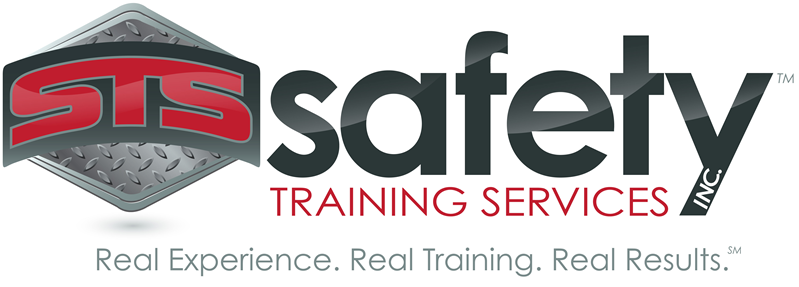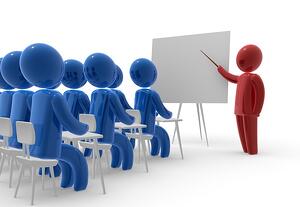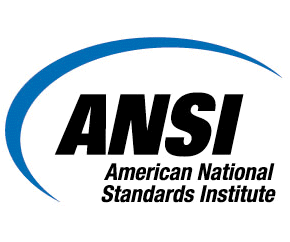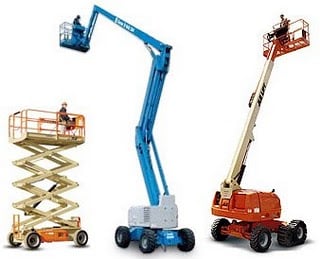In today's article, we will finish up our topic of AWPs, or aerial work platforms, with information on the roles of the trainer and of the dealer. Previously, we discussed 'Tips, Training, and Current Issues' and 'Compliance, Training and Familiarization'.
Role of the Trainer
As we stated in a previous article, the ANSI A92 Standards have already defined a qualified person. This relates to both operators and trainers:
“Qualified person. One who, by possession of a recognized degree, certificate, or professional standing, or by extensive knowledge, training, and experience, has successfully demonstrated his/her ability to solve or resolve problems related to the subject matter, the work, or the project.”
Attributes
Per the “Statement of Best Practices of General Training and Familiarization for Aerial Work Platform Equipment,” here is a suggested list of attributes a trainer will need in order to successfully educate operators:
Skills/Knowledge
- Must know the rules, regulations and standards.

- Needs to have knowledge of the equipment, the operator safety manual, warning decals and placards.
- Possess awareness of potential hazards and the means to protect against identified hazards.
- Be able to identify and avoid potential workplace hazards.
- Understands manufacturer’s guidelines for proper/improper use and application of the equipment.
- Knows the consequences of improper use and application of the equipment.
- Has a good safety record that is based on consistent implementation of the rules.
Communication
- Possess good communication and presentation skills when speaking with groups or individuals.
- Knows and understands the teaching methods and learning styles of adult learners.
- Be able to obtain acknowledgement from the operator that he/she can implement the training.
- Has the ability to deliver training in a manner and language appropriate to ensure understanding by the audience.
Qualities
 Possesses a concern for the welfare of others so trainers can serve as a safety advocate.
Possesses a concern for the welfare of others so trainers can serve as a safety advocate.- Be intuitive and perceptive with people, i.e., can “read” the audience.
- Works in a confident and honest manner with people.
Role of the Dealer
If you were to rent aerial equipment, you may wonder what the role of the dealer who provides you with the rental equipment is. Do they provide training? Familiarization?
General Training
 It is the dealer’s responsibility to assist its customers in identifying training resources in order to satisfy its operator training obligations. Some dealers may provide training for their customers; others may choose to offer other training resources such as recommending a training company or getting the customer information on the manufacturer. Potential training resources are any entity offering instruction by a qualified instructor following an appropriate training program. This may be the manufacturer, rental company, independent training company or internal resources of the employer who rented the equipment.
It is the dealer’s responsibility to assist its customers in identifying training resources in order to satisfy its operator training obligations. Some dealers may provide training for their customers; others may choose to offer other training resources such as recommending a training company or getting the customer information on the manufacturer. Potential training resources are any entity offering instruction by a qualified instructor following an appropriate training program. This may be the manufacturer, rental company, independent training company or internal resources of the employer who rented the equipment.
ANSI/SIA A92 Standards Section 5.7 (Responsibilities of Dealers) state:
“Training. The dealer shall offer appropriate training to facilitate owners, users, and operators to comply with requirements set forth in this standard regarding inspection, maintenance, use, application, and operation of the aerial platform.”
Nothing states that the dealer must accomplish this training itself. Remember, the responsibility for conducting proper operator training has always been on the user and the individual employer. The dealer must offer training or direct the customer to a selection of reasonably available resources to ensure proper training of the customer’s personnel.
Familiarization
It is the dealer/rental company’s responsibility to provide familiarization to the designated person(s) receiving the equipment.
ANSI/SIA A92.5 and A92.6 Standards Section 5.8 (Responsibilities of Dealers) state:
“Familiarization upon delivery. Upon delivery by sale, lease, rental or any form of use, the dealer shall have the responsibility with the person designated by the receiving entity for accepting the aerial platform to:
- Identify the weather resistant compartment (for manual(s)
storage). - Confirm that the manual(s), as specified by the manufacturer, are on the aerial platform.
- Review control functions.
- Review safety devices specific to the model aerial platform being delivered.”
Record Retention
Whenever general training or familiarization takes place, documentation should be made to verify that said training/familiarization has been completed. An optional validation of training may come in the form of a certificate or an ID card. These documents should include the information/standards trained on under ANSI/SIA A92.
 The documentation (for verification) of training/familiarization should include the following information and should be retained for a period of four years as required by the ANSI/SIA A92 Standards:
The documentation (for verification) of training/familiarization should include the following information and should be retained for a period of four years as required by the ANSI/SIA A92 Standards:
- Name of the operator or person receiving familiarization
- Date of training/familiarization
- Equipment covered in training/familiarization
- Identity of the person(s) performing the training/familiarization
Image by Horrgakx on Flickr.


 The Occupational Safety & Health Administration (OSHA), a government agency that issues and enforces regulations for employers to ensure workplace health and safety. These regulations are often referred to as standards, but they are in fact laws and compliance is mandatory.
The Occupational Safety & Health Administration (OSHA), a government agency that issues and enforces regulations for employers to ensure workplace health and safety. These regulations are often referred to as standards, but they are in fact laws and compliance is mandatory. Despite ANSI standards being voluntary, it is in every company’s best interest to comply. Because OSHA law many times is adopted from ANSI standards, the standards in the ANSI handbook are considered a consensus of what’s best to keep employees safe and because of this OSHA can decide that the company is not “free from recognized hazards” and cite the company for the “general duty” clause for not following ANSI standards. So as it turns out, ANSI standards may not be as “voluntary” as expressed. Keep yourself and your employee’s safe, by following the ANSI guidebooks as mandatory as OSHA law.
Despite ANSI standards being voluntary, it is in every company’s best interest to comply. Because OSHA law many times is adopted from ANSI standards, the standards in the ANSI handbook are considered a consensus of what’s best to keep employees safe and because of this OSHA can decide that the company is not “free from recognized hazards” and cite the company for the “general duty” clause for not following ANSI standards. So as it turns out, ANSI standards may not be as “voluntary” as expressed. Keep yourself and your employee’s safe, by following the ANSI guidebooks as mandatory as OSHA law.
 When properly trained, an operator is ready to operate any like-type of AWP as long as they are familiarized with the controls/safety devices of the other like-type equipment. Remember, when training takes place on a particular model of equipment, you must become “familiar” with other equipment models that were not included in the initial instruction so as not to put the operator at risk of danger/injury because of failure to know specific controls/safety devices. For example, certain manufacturers/models have different emergency lowering procedures, so familiarization is just as critical as general training. You wouldn’t want to be stuck up 30 ft in the air on a scissor lift with no one around, not knowing how to get down!
When properly trained, an operator is ready to operate any like-type of AWP as long as they are familiarized with the controls/safety devices of the other like-type equipment. Remember, when training takes place on a particular model of equipment, you must become “familiar” with other equipment models that were not included in the initial instruction so as not to put the operator at risk of danger/injury because of failure to know specific controls/safety devices. For example, certain manufacturers/models have different emergency lowering procedures, so familiarization is just as critical as general training. You wouldn’t want to be stuck up 30 ft in the air on a scissor lift with no one around, not knowing how to get down!
 Remember, familiarization must be facilitated by a qualified person. Only someone who is already trained and qualified may self-familiarize by reading and understanding the manual/operating instructions. Always refer to the operator’s manual if you have any questions, you might be surprised to find out how much information is actually in there!
Remember, familiarization must be facilitated by a qualified person. Only someone who is already trained and qualified may self-familiarize by reading and understanding the manual/operating instructions. Always refer to the operator’s manual if you have any questions, you might be surprised to find out how much information is actually in there!
 AWP equipment is very useful. It allows users access to usually inaccessible areas, usually at height. They can be used by maintenance workers, construction workers, firefighters (for emergency access); all while being operated by a single person (most models). AWPs can not only be used for transportation and/or access to certain areas, but also can be equipped with electrical outlets, compressed air (for power tools), and other specialist equipment.
AWP equipment is very useful. It allows users access to usually inaccessible areas, usually at height. They can be used by maintenance workers, construction workers, firefighters (for emergency access); all while being operated by a single person (most models). AWPs can not only be used for transportation and/or access to certain areas, but also can be equipped with electrical outlets, compressed air (for power tools), and other specialist equipment. In next week’s blog article, we will address many of these issues and shed light upon how to be ‘appropriately’ trained to use an AWP. This should serve as a thought-provoking piece until then, when we will discuss training, being ‘qualified’ and the importance of familiarization for the operator.
In next week’s blog article, we will address many of these issues and shed light upon how to be ‘appropriately’ trained to use an AWP. This should serve as a thought-provoking piece until then, when we will discuss training, being ‘qualified’ and the importance of familiarization for the operator. the safe use of the equipment.
the safe use of the equipment. Maintain a minimum clearance of at least 10 feet, or 3 meters, away from the nearest energized overhead lines.
Maintain a minimum clearance of at least 10 feet, or 3 meters, away from the nearest energized overhead lines. Training is administered by professional safety trainers, specialized in delivering operator training for aerial equipment with an engaging course that exposes participants to multi-media content, cause & effect accident videos and current events. We also provide on-site training at your location, alleviating the need for participant travel.
Training is administered by professional safety trainers, specialized in delivering operator training for aerial equipment with an engaging course that exposes participants to multi-media content, cause & effect accident videos and current events. We also provide on-site training at your location, alleviating the need for participant travel.